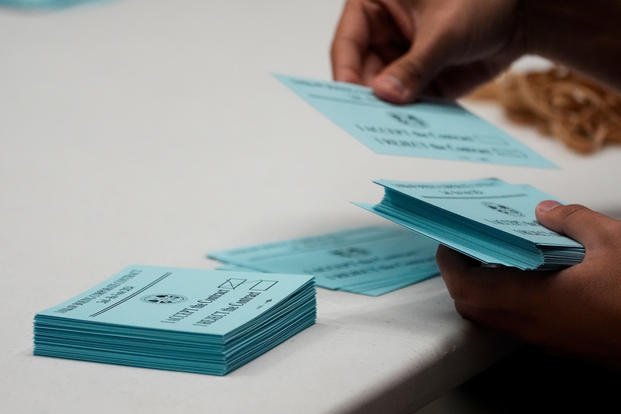Copyright Entrepreneur

Key Takeaways Rotman landed on the business idea that would become PrettyLitter while in an incubator program in 2015. His pitch won in the program’s consumer-facing category competition, and Rotman received a $50,000 check. Here’s how Rotman took PrettyLitter from a $1 million seed round to a major Mars acquisition — and what’s next. This as-told-to story is based on a conversation with Daniel Rotman, founder and CEO of PrettyLitter, an innovative pet care brand that’s conservatively sold more than 50 million bags of litter to date, per the company. PrettyLitter started with just $1 million in seed funding and was acquired by Mars in under five years for a reported $500 million to $1 billion*. The piece has been edited for length and clarity. The inspiration for starting my business, PrettyLitter, came from a real-world pain point: I’d lost my 15-year-old cat, and she had a rapid decline. She went from behaving normally to being lethargic all of a sudden. It was a really traumatic experience, and I learned from the vet that this is actually very common for cats — they’re built by nature to hide illness really well because they’re stoic and don’t want to feel vulnerable. Related: I Bought a Business That Was Making $5,000 a Month. Then I Used This 2-Step Process to Hit $100,000 Monthly in Under 2 Years. A few years later, in 2015, I was participating in an incubator program where people were hacking out a business idea. I was at a point in my life where I’d finished graduate school and was going to go into public policy, but then I decided to pivot back into entrepreneurship. So, as everyone was thinking about ideas inspired by their lives, I recalled what I had gone through with my cat. I thought, What can I do to help cat owners not have to go through the trauma of seeing their cats rapidly decline? “The lightbulb went off: the litter box.” I remembered the vet explaining to me that urinary diagnostics were an important tool in understanding health problems in both cats and dogs, so I began to wonder if I could use their waste as a sort of alert system. The lightbulb went off: the litter box. It’s what we use every day as cat owners; we all hate it, but we have to have it. I wanted to turn the litter box into a health-monitoring tool. The incubator program ended with a competition. There were 30 different entrepreneurs, and we were separated into two groups — B2B and consumer-facing ideas. We won on the consumer-facing side, so I received a $50,000 check, which was a huge deal for me at the time. “It works as a color-changing alert system that gives you a broad sense of what’s going on with your cat.” First, I conducted extensive research into veterinary labs to see if there was a way I could create this formula. Would it even be possible? Fortunately, it was. I found a wonderful veterinary lab that helped develop the formula, which we own and always have, but the lab helped us build it out. Related: His College Side Hustle Made $12,000 on Amazon in 2 Weeks — Then It Surpassed $250 Million I put on my entrepreneur’s hat — I had to find a substrate material that would work, and it turns out that type C silica gel, one of the most abundant naturally occurring minerals in the world, is a substrate material that is pH neutral. A pH-neutral formula avoids giving false positives or negatives. We wanted to be accurate, but we also purposely advertise that we don’t diagnose an illness. So it works as a color-changing alert system that gives you a broad sense of what’s going on with your cat, and then you go to the vet to figure out the diagnosis. The substrate material had other benefits, too. Unlike cat litter materials that clump, the substrate absorbs, trapping bacteria and urine into its micropores, so it doesn’t need to be scooped up and thrown out every time the cat uses the litter box. That was a revelation — because it meant that I needed 80% less substrate material, which also meant the product would be viable to ship. Related: Friends’ Side Hustle Saw ‘Explosive Growth’ and Hit 8 Figures Fast: ‘Have to Pinch Ourselves’ Once I had the product, I learned more about Shopify and running Facebook ads. I turned my apartment into a fulfillment center. People really responded to the product; orders started coming in. Step by step, I would build it — print out a label, pack it onto a flat rate legal envelope, go down to the local post office and ship it out. Within about six months, the operation got bigger than my bedroom, so I moved to a fulfillment center. In that first year, I did about $760,000 in revenue. “Raising huge rounds wasn’t in my DNA.” Philosophically, I never wanted to raise money for PrettyLitter, though I did end up raising a $1 million seed round. I’m a first-generation American. I watched my parents build a business to feed us and sustain us. So I didn’t come from the culture of short runway, big burn rate, needing to have 100 employees for the sake of saying, “I have 100 employees.” Even though VCs approached us as we were getting more successful, raising huge rounds wasn’t in my DNA. I prioritized profitability, high gross margin and making sure that we were not growing beyond our needs. I outsourced until I had to hire in-house. My very first hire was my director of customer service because it had reached the point where I was answering 200 customer service tickets a day, most of which were asking for their tracking numbers. Then I eventually hired a director of marketing who was then able to outsource the rest. That model allowed me to build PrettyLitter as an economically sound company. Related: With No Money, I Built a Business Selling to 165,000 Suppliers. Here’s What You Need to Know Now to Succeed. I went from $760,000 in my first year to $6.5 million in my second year, then jumped to $16.5 million the next year, then $32 million, $64 million, $125 million, $250 million, $350 million — all with a staff of under 10 people. We’d already been growing at a rapid rate, but when the pandemic hit, pet adoption went through the roof, and people didn’t want to leave their homes to shop in person, so sales soared. There was some turnaround time between when I placed my orders and when they got into the warehouse and shipped, which meant I had to front the costs of those orders. So either I was going to have to take on some line of credit or debt facility just to fund the amount of orders that were coming in, or I had to be open to a strategic partnership. I’d connected with people at Mars over the years, so I decided to start the conversation — what began as a friendly catch-up turned into a strategic discussion about what might interest me. That was an inflection point and massive leap forward in terms of my vision for PrettyLitter: expanding beyond just a litter company and into a pet care and health ecosystem, which would require a lot of capital and a research and development team that I didn’t have yet. “They made me an offer I couldn’t refuse.” So we ended up being acquired by Mars. Mars is quiet about these deals, but there is public information out there about the acquisition.* I’d always felt that Mars would be the best place for PrettyLitter. Mars is obviously one of the largest veterinary owners in the country, but in addition to that, it’s still a private, family-owned company, and the family cares very deeply about pet health, so it was a great philosophical fit. They made me an offer I couldn’t refuse; they also structured the deal to keep me on as a founder, really invested in the future and management of the company. We were also able to retain our entire team. Related: Couple’s Business Revamped a Pantry Staple and Is About to Hit $5 Million Cat owners are a very savvy group of people, and they’re a group of people that has been deeply underrepresented, from a business perspective. Forty-nine million U.S. households have a cat. So you have a huge swath of the population loving their cats, you have Taylor Swift and Katy Perry, yet there’s this cultural stigma: The cat belongs to the crazy cat lady, while the dog is America’s pet, a man’s best friend. PrettyLitter grew out of a very organic place to address the needs of a genuinely untapped, misunderstood consumer — who was spending a ton of money.



